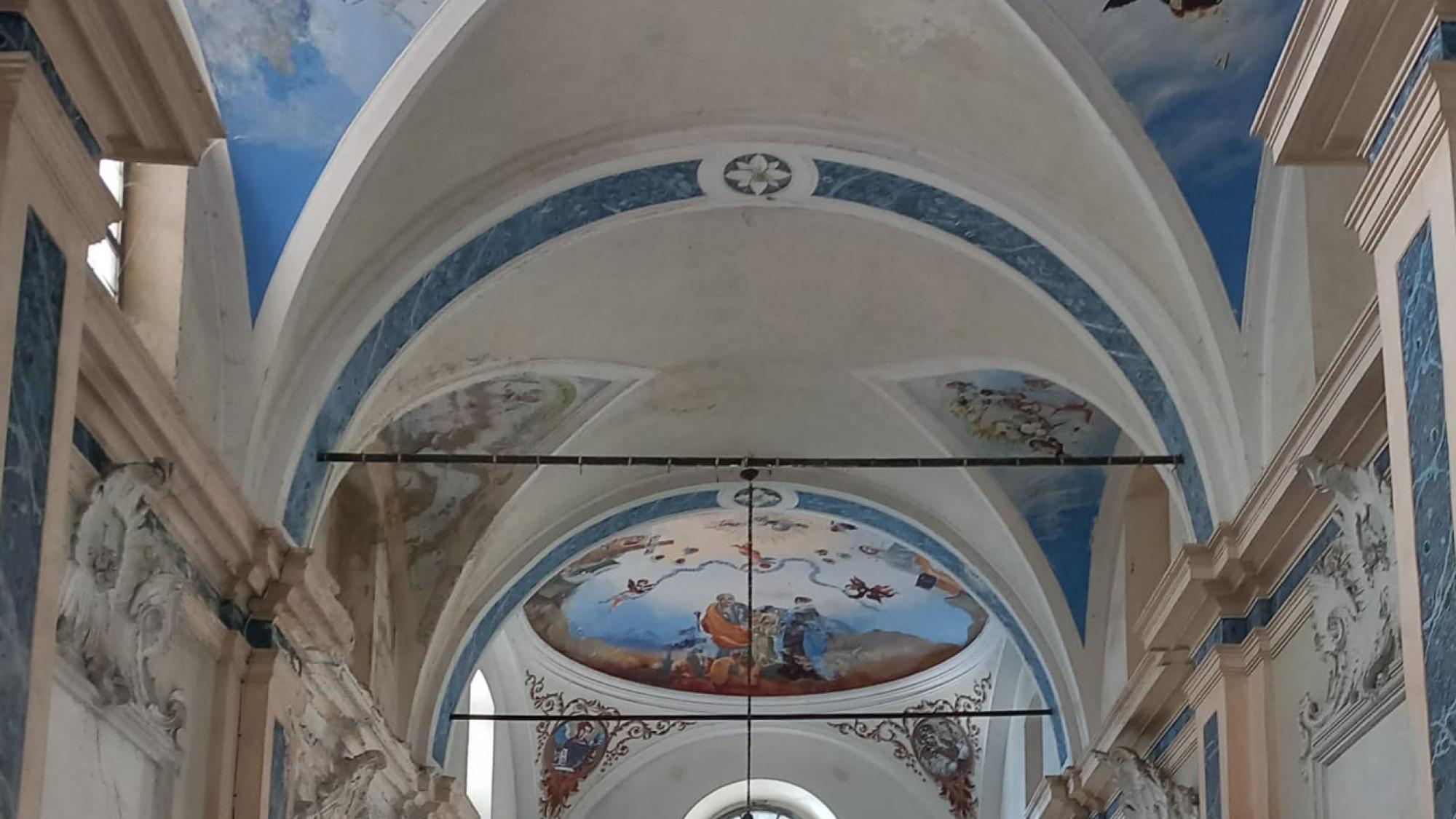

The Church of the Madonna del Ronco or Church of the Immaculate is located in an extremely panoramic position on a rocky outcrop overlooking the lake, in a unique atmosphere thanks to the truly evocative scenery that allows the gaze to sweep from Como to Tremezzina.
The area is familiarly called Puncett by the residents of Brienno; it is the only church in the village oriented along the south-north axis and with the apse facing north, by virtue of the unique geographic conformation of the Punta di Ronca on which it was built.
Erected on an older, more modest oratory, this gem was built in the 17th century and certainly finished by 1707; probably restored in 1865, at the same time as the bell tower was built.
The building is small in size and restrained in form: a gabled facade with a tympanum pediment and four elegant pilasters of Ionic order resting on granite slabs.
In the center, above the central arch is a window with a round archivolt.
On either side of the entrance under the portico, probably the result of an 1865 enlargement, are two grated windows equipped with granite seatings and urns for the collection of o erts.
The porch moldings are made of finely worked "molar" stone.
Inside, the space is organized in a single nave, bright despite the fact that the entire left wall is blind.
Upon entering, a stoup resting on a granite stem can be seen on the right; the floor of the entire church, with the exception of the terracotta chancel, is made of large slabs of local rock.
Above the entrance is a large loggia, conceived and designed to house the choir or an organ.
The balustrade dividing the chancel from the nave is made of Verona marble.
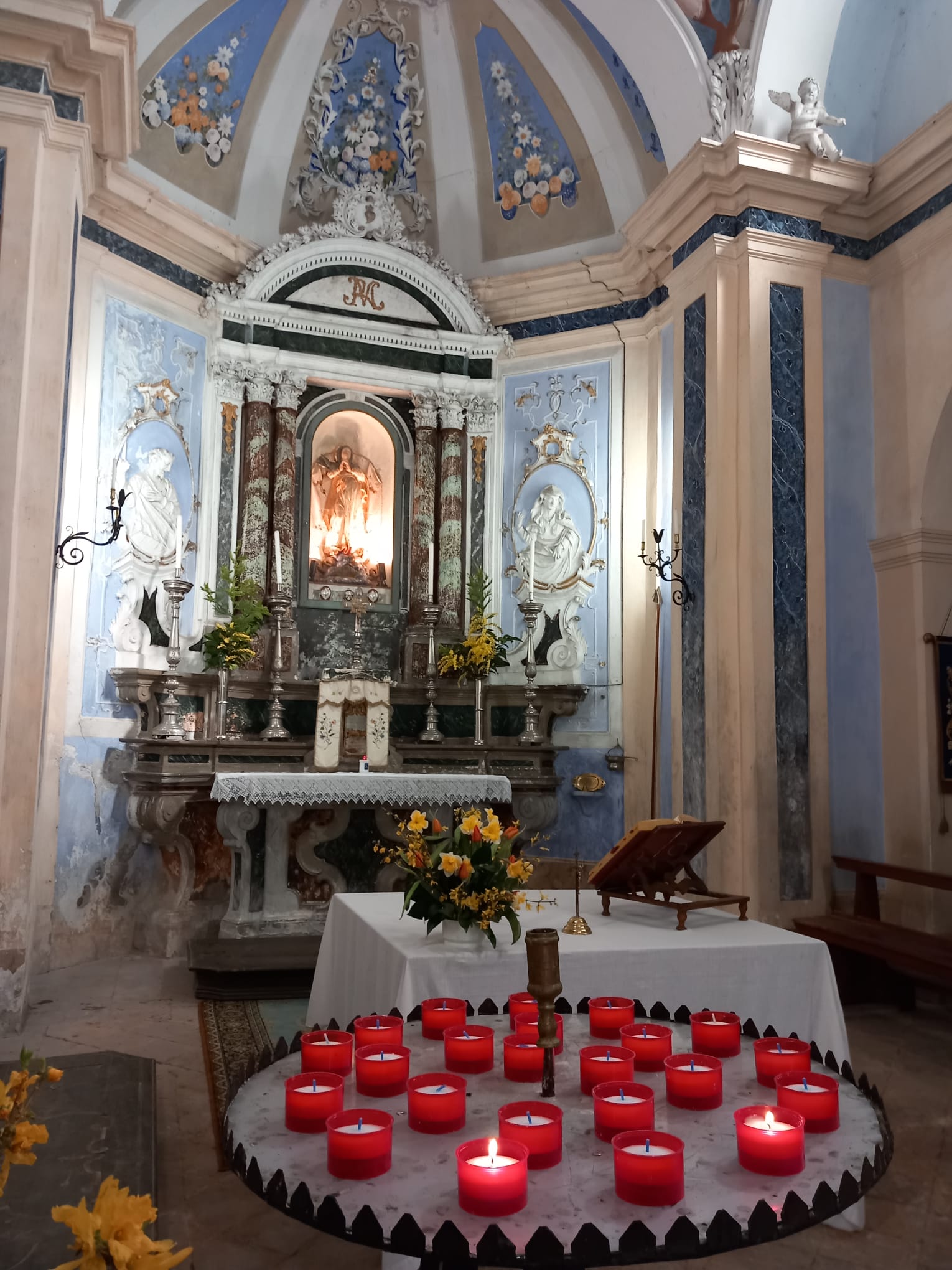
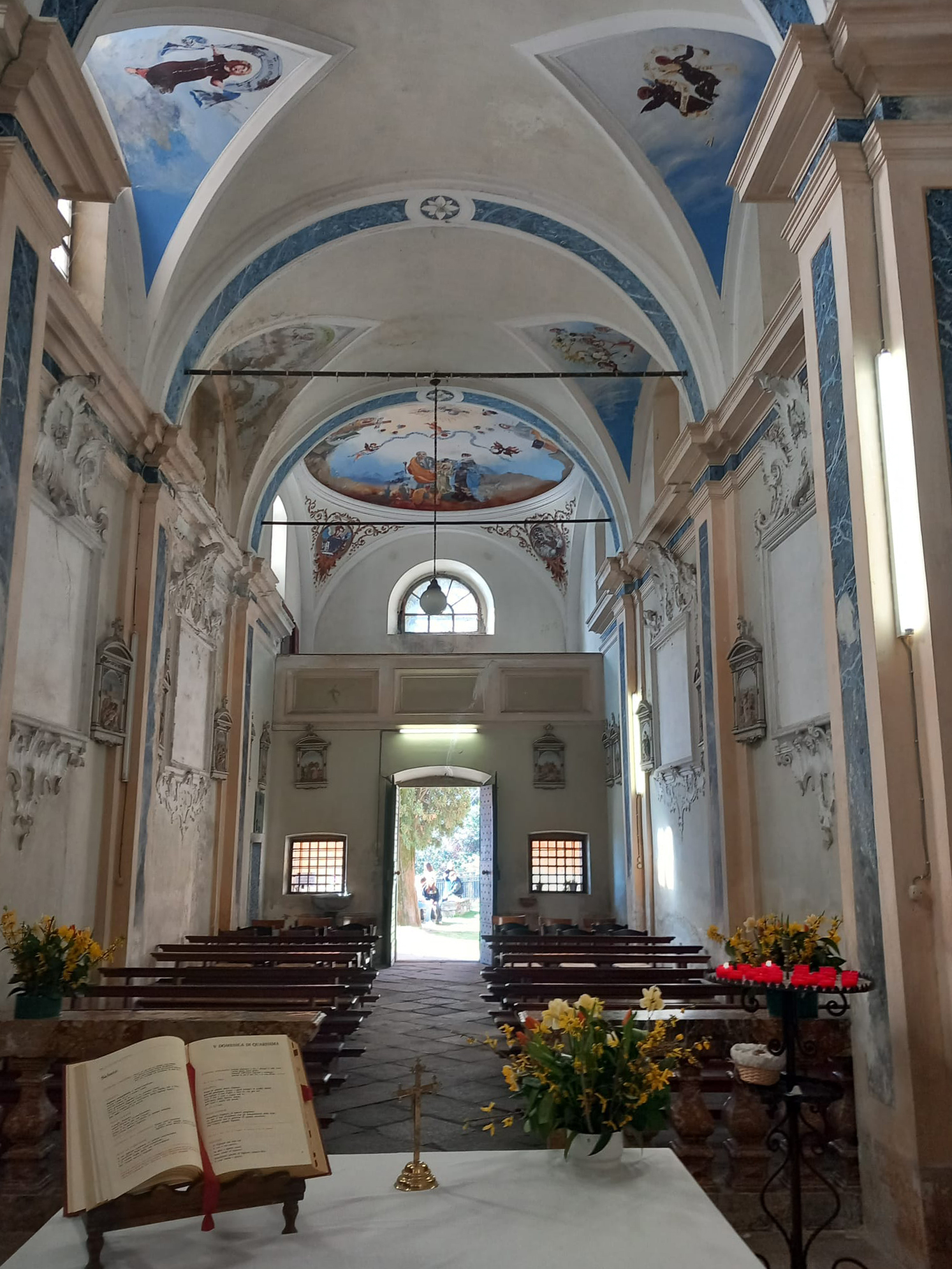
Plaster frames are visible in the nave that were to contain four late 18th-century canvases depicting the deposition of Christ, a session of the Council of Trent, the birth of Christ, and the Annunciation, respectively. The canvases were stolen in the 1980s.
The most significant pictorial decorations are concentrated in the chancel area, namely in the dome and the four pendentives supporting it. The lowered vault of the dome depicts the scene from Revelation in which Our Lady and Jesus fight and slay the seven-headed dragon in the presence of St. John the Evangelist and hosts of angels. The spandrels depict the two prophets Isaiah and Ezekiel and the two kings of Israel David and Solomon. Each of the biblical characters exhibits a stele bearing quotations referring to Our Lady and the prodigy of the Immaculate Conception.
In the apse the high altar has four plaster columns painted in marble and in the niche a wooden statue of Our Lady with painted iron wreaths of flowers. On the sides blue-colored background walls with decorative stucco and bas-reliefs of the Madonna and San Giuseppe.
Of the altar on the left, also dedicated to the Virgin, the base made in "scagliola" stands out, a technique that emerged between the late 16th and early 17th centuries to imitate inlaying with marble and semi-precious stones by mixing the same plaster (scagliola), combined with natural glues and colored pigments.
This technique is typical of the Intelvi Valley and can be found in many churches in the area.
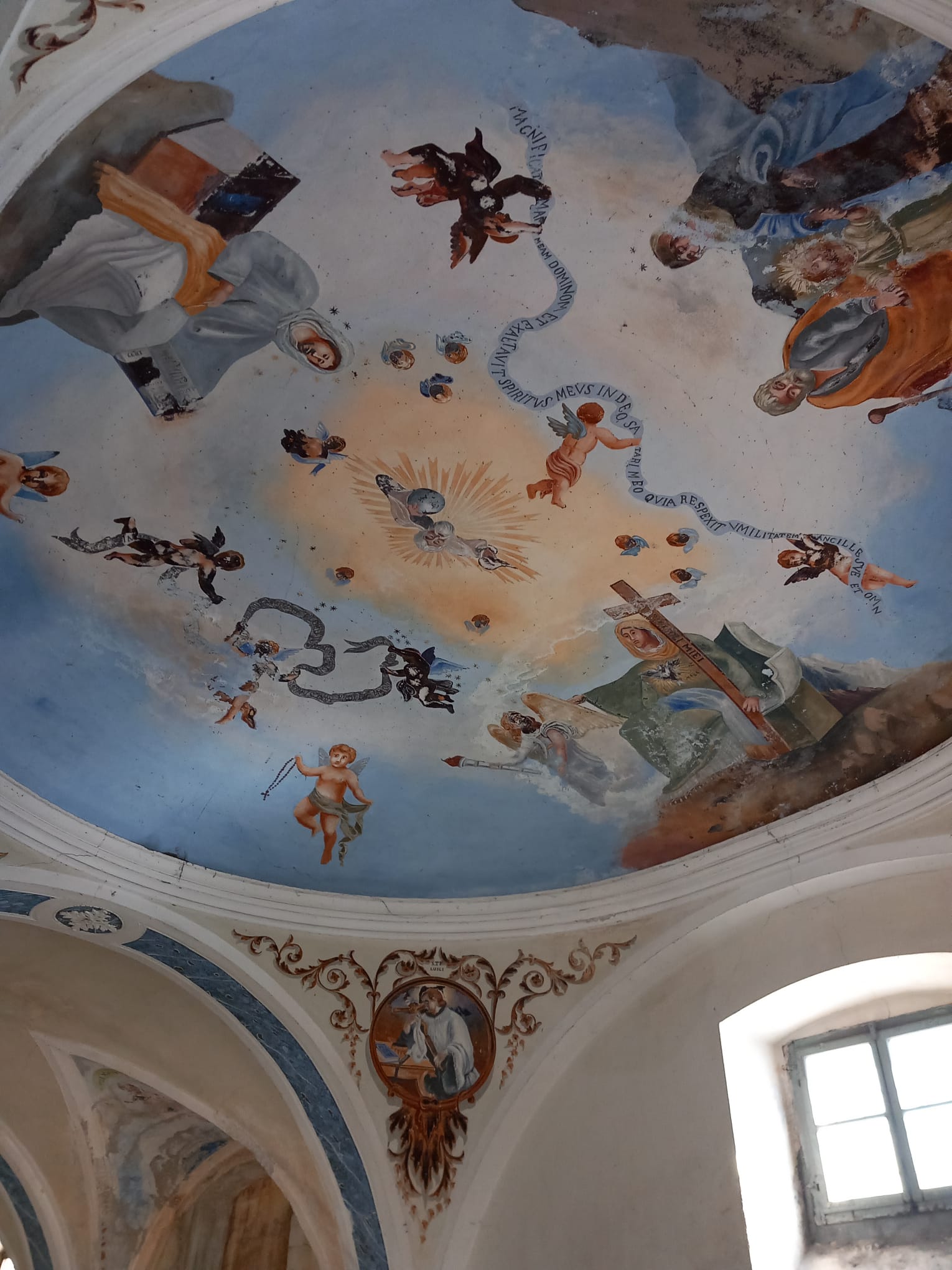
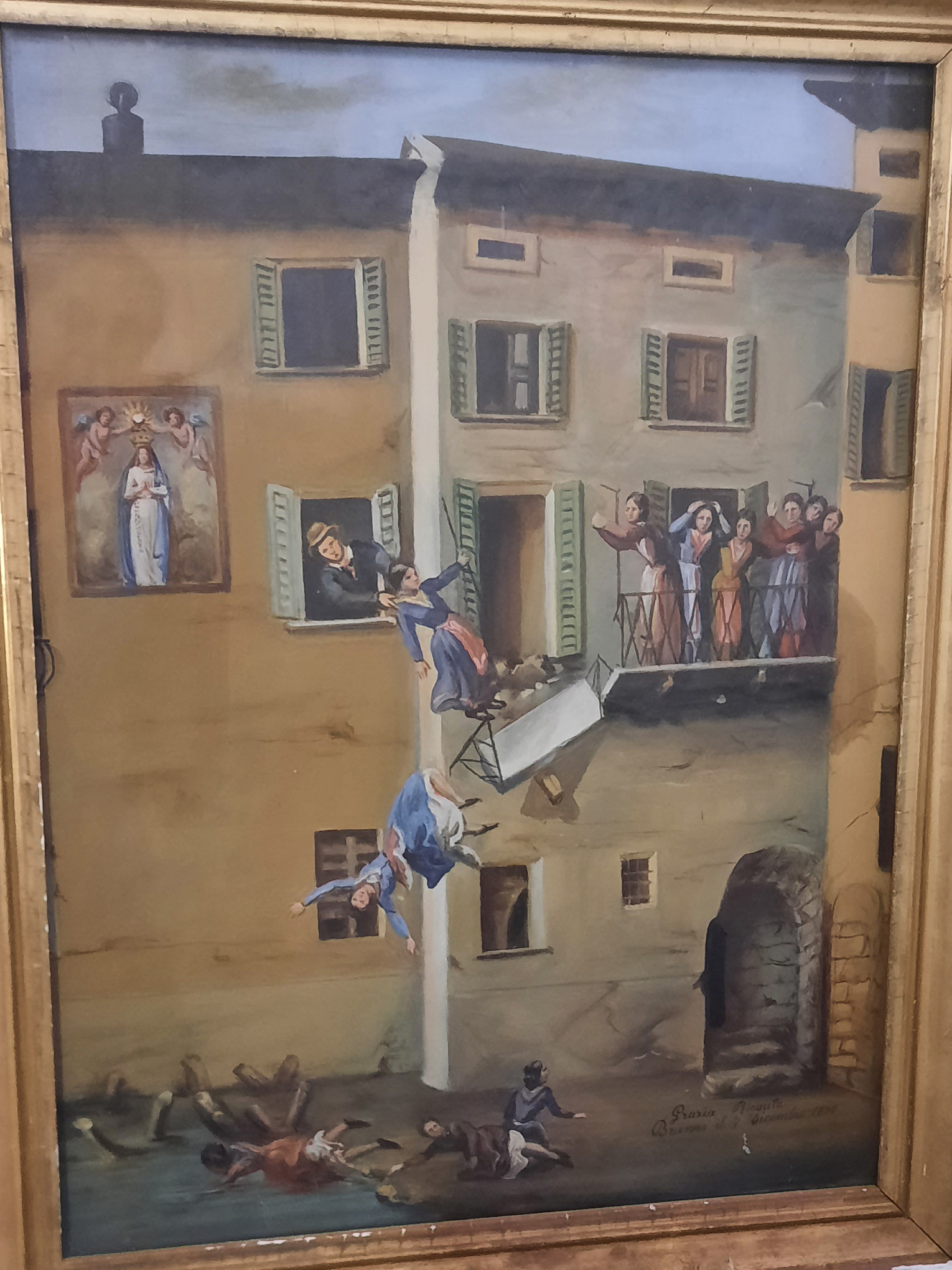
At last, in the compartment preceding the sacristy, two locally made and popular votive offerings are observed.
One ex-voto alludes to a late 19th-century incident where the collapse of a balcony above Brienno's old pier dragged some women with it, but fortunately only one casualty was counted.
The other episode alludes, however, to the grace received after a scaffold collapsed at a factory under construction.
At the end, under the churchyard it is possible to step into the past of about 100 years, observing a fortification belonging to the Cadorna Line of which we can still recognize bunkers, service rooms and tunnels.